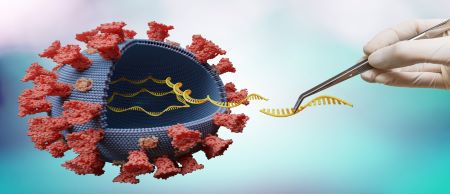Research into the genetic diversity of the SARS-CoV-2 Coronavirus in Portugal

The spread of the novel coronavirus SARS-CoV-2 (COVID-19) in Portugal is being monitored by the Instituto Nacional de Saúde Doutor Ricardo Jorge, I.P. (INSA), by analyzing the genome of this virus. To date, the data collected has made it possible to analyze 1,550 SARS-CoV-2 genomes obtained from positive samples of the virus collected or received by the INSA. This study is part of one of the 121 projects supported by FCT under the Research 4 COVID-19 special support program, aimed at rapid implementation projects for innovative solutions in response to the COVID-19 pandemic.
The main objectives of the study are to identify mutational profiles of SARS-CoV-2, monitor transmission chains and identify new introductions of the virus in Portugal; predict the onset of transmission in the community and assess the impact of containment measures; determine possible associations between genetic (mutational) profiles of the virus and certain clinical manifestations (e.g. different degrees of severity of COVID-19); and improve knowledge of the genetic variability of this new virus worldwide. different degrees of severity of COVID-19); and improve knowledge of the genetic variability of this new virus on a global scale, which will lead to better development of prophylactic (vaccines) and therapeutic measures. The data generated by the Ricardo Jorge Institute was immediately shared internationally, through the Nextstrain online platform and the GISAID repository.
Using next-generation sequencing technologies and bioinformatics analysis through the INSaFLU online platform, INSA has been able to identify the complete genome sequence. This data enables the development of an interactive dashboard (see here) that reflects an integrative analysis of the genetic diversity (phylogeny) and geotemporal dispersion of the SARS-CoV-2 virus in Portugal, carried out using the tools of the Nextstrain project(Hadfield et al. 2018, Bioinformatics).
All the information on the development of this study is available on the page dedicated to the project.